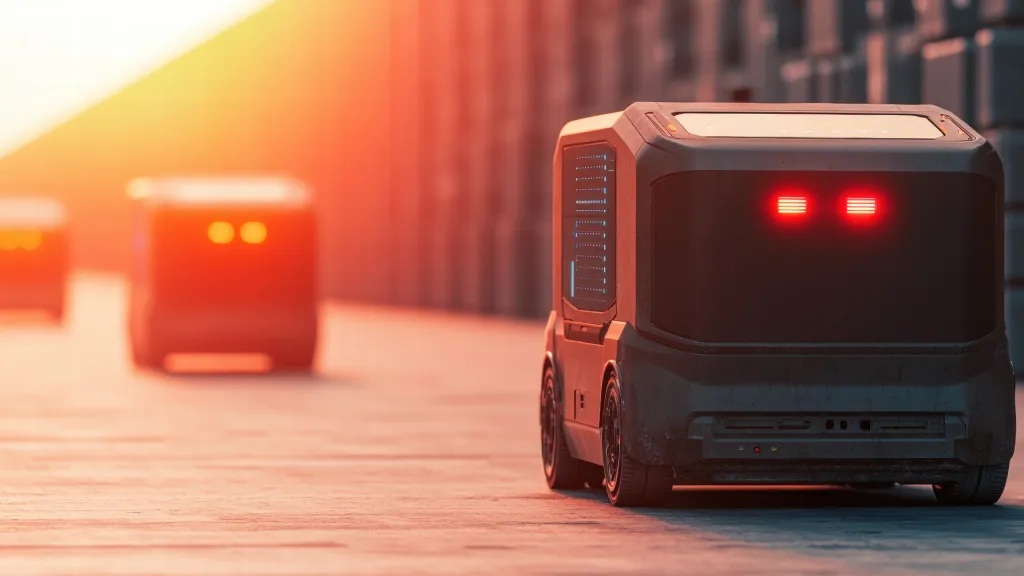Opening Scene
The Shift in Motion
In the quiet hum of a warehouse in South Carolina, thousands of packages glide along conveyor belts, guided not by people, but by precision. Overhead, robotic arms, code-named Blue Jay, pick, stack, and stow with a rhythm no human could sustain. Each movement is fluid, almost graceful. Yet the implication is anything but mechanical: a new era of automation has begun.
Amazon isn't simply experimenting anymore, it's executing a plan that could reshape the global labour economy.
According to internal documents reported by The New York Times, the company expects to avoid hiring 600,000 workers by 2033 as it doubles deliveries and automates 75% of its operations. Between 2025 and 2027 alone, automation could save Amazon $12.6 billion and replace 160,000 US roles.
The headlines say efficiency.
The subtext reads transformation.
The Insight
What's Really Happening
Amazon's move towards robotics is not a sudden leap, but the culmination of a decade-long masterplan. Since acquiring Kiva Systems in 2012, the company has been building a layered automation ecosystem spanning movement, manipulation, sorting, storage, identification, and packing.
Each robot, Sparrow, Proteus, Cardinal, Pegasus, Hercules, represents a new level of specialisation. Together, they form a choreography of mechanical precision that moves more than 8 billion packages a year.
Now, two new players take the stage:
- Blue Jay, a multi-tasking robotic arm designed to handle complex warehouse operations.
- Eluna, an agentic AI platform that analyses fulfilment data to orchestrate workflows autonomously.
In Amazon's words, Blue Jay is an “extra set of hands.” But in reality, it's a symbol of something larger, the shift from human assistance to machine initiative.
As Nobel Prize-winning economist Daron Acemoglu told The Times, this could make Amazon, currently the second-largest US employer, “a net job destroyer.” Once perfected, the model will ripple outward, forcing competitors from Walmart to JD.com to accelerate their own automation pipelines.
The age of warehouse workers scanning barcodes and lifting boxes for twelve-hour shifts is ending.
The Machine Economy is beginning.
The Strategic Shift
Why It Matters for Business
Automation has long been the quiet engine of efficiency. But what's happening now goes beyond productivity, it's a structural redefinition of work itself.
For Amazon, robots aren't a side project; they're a strategic lever underpinning logistics, profitability, and growth. The company's operational edge, its ability to deliver anything, anywhere, faster, depends on scale. And scale now depends on machines.
By replacing manual tasks with autonomous systems, Amazon estimates it can save 30 cents per item shipped. Multiply that across billions of orders, and you see the true calculus of automation: capital expenditure traded for exponential output.
But beneath the balance sheet lies a societal fault line.
Automation is no longer displacing niche roles, it's encroaching on the foundation of hourly work. When robots handle fulfilment, sorting, and transport, the economic consequences cascade far beyond warehouses. Rival retailers will adopt similar systems to stay competitive, triggering a chain reaction that could reshape the very nature of employment in logistics and retail.
This is not a story about Amazon alone.
It's a story about what happens when labour becomes an algorithm.
The Human Dimension
Reframing the Relationship
Amazon's public narrative is careful, almost rehearsed: robots as “cobots”, designed to “reduce repetitive tasks and improve safety.” The company highlights community partnerships and job creation in other areas to soften the optics.
But you don't need to read between the lines to feel the tension.
Blue Jay doesn't call in sick. Eluna doesn't need a pension. The “human–machine partnership” may sound collaborative, but the economics are asymmetrical. For every new engineer Amazon hires, hundreds of warehouse roles may quietly disappear.
For leaders and policymakers, this moment demands a redefinition of work's social contract. What happens when a company employing 1.2 million people, the second-largest workforce in the United States, begins to automate itself from within?
And what happens to the communities that depend on those wages, those health benefits, those seasonal contracts that keep local economies afloat?
Automation will create new roles, of course, maintenance, data operations, robotics programming, but not at scale, and not for everyone. As Acemoglu warns, the “job creation narrative” around automation is often overstated. For every new robotics engineer, there are a thousand displaced workers who cannot simply “retrain”.
The question isn't whether robots will take jobs.
It's how society adapts when they do.
The Takeaway
What Happens Next
The next 18 months will mark an inflection point.
Amazon's Big Automation Push, led by Blue Jay and Eluna, will roll out across fulfilment centres globally. By 2027, robotic automation could be as integral to commerce as cloud computing or digital advertising.
But the story here is bigger than robotics. It's about what comes after the hype, when generative AI fades into the background and physical automation takes the spotlight. From humanoid robotics startups such as Figure AI and Unitree, to autonomous delivery fleets from Waymo and Baidu, the race is shifting from code to capability, from intelligence to embodiment.
For business leaders, the message is clear:
The automation revolution isn't theoretical, it's operational.
The challenge now is to build companies, and societies, that can thrive in the Machine Economy. That means rethinking workforce models, reskilling strategies, and even brand ethics in an age where efficiency has moral consequences.
Because the future Amazon is building is not one of human replacement, but of human recalibration.
The question is whether the rest of us are ready to evolve with it.



